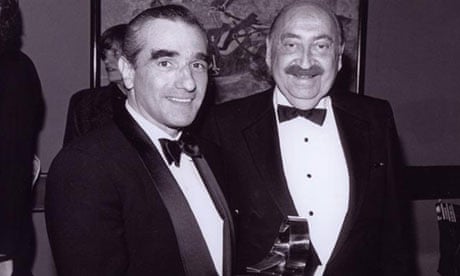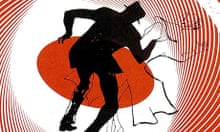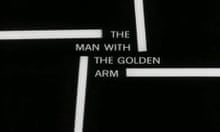Saul Bass trained as a graphic designer, and was commissioned by director Otto Preminger to put together a poster for his 1954 opera/musical Carmen Jones. Preminger was so impressed he asked him to create a title sequence too, and Bass went on to specialise in the area, resulting in memorable collaborations with Preminger, Alfred Hitchcock and Martin Scorsese.
The Man with the Golden Arm
Reading on mobile? Click here to watch video
Bass made a splash with the 1955 Preminger study of heroin addiction, moving paper cutouts around to suggest needles, veins and arms. The stonking theme, composed by Elmer Bernstein, helped.
The Seven Year Itch
Reading on mobile? Click here to watch video
The Billy Wilder-directed sex comedy starring Marilyn Monroe struck a lighter mood, and Bass responded with perky cutout boxes and a vibrant orange, yellow and red colour scheme.
Around the World in 80 Days
Reading on mobile? Click here to watch video
Bass created a seven-minute end-credit sequence for the 1956 star-stuffed Jules Verne yarn; with its deployment of Empire cartoons it looks, in retrospect, very Python-era Terry Gilliam.
Vertigo
Reading on mobile? Click here to watch video
An intense mix of close-up live footage (a woman's eye) and the hypotrochoid imagery that dominated the poster, Bass set the tone for Hitchcock's 1958 thriller of obsession and nausea. A heavyweight score, this time from Bernard Herrmann, did its bit.
Anatomy of a Murder
Reading on mobile? Click here to watch video
Another Preminger film, another great score (this time by Duke Ellington and Billy Strayhorn) and more paper cutouts. Bass introduced jazz-inflected procedural thriller by deconstructing the human body.
North by Northwest
Reading on mobile? Click here to watch video
Arguably Bass' finest? The essence of Hitchcock's smartest thriller is distilled into a snappy animated sequence, with credits moving smoothly into place on the polished facades of skyscrapers: and finishing with Hitchcock himself running for a bus.
West Side Story
Reading on mobile? Click here to watch video
Bass spelled out the closing credits of Leonard Bernstein's musical by moving the camera over a graffiti-splattered wall, with the principal players names rendered in chalk. It ends very nicely on an "End" street sign.
Seconds
Reading on mobile? Click here to watch video
Bass' opening sequence for John Frankenheimer's cult thriller from 1966 reuses the Vertigo close-up idea, but to more obviously psychedelic effect, feeding them through distorting and refracting mirrors. All to reinforce the mind-melting premise of the film itself, about a man who undergoes a bizarre identity change.
Cape Fear
Reading on mobile? Click here to watch video
Martin Scorsese hired Bass and wife Elaine to work on the titles for GoodFellas, but this second job, on the 1991 remake of Cape Fear is more accomplished, full of Hitchcockian menace: water, birds, eyes and Herrmann on the soundtrack.
Casino
Reading on mobile? Click here to watch video
Bass' last title sequence (in collaboration with his wife Elaine) is also one of his most extraordinary: beginning with the immolation of Robert De Niro's character in a car bomb, it merges flames, Vegas lights, and a Bond-style somersaulting figure to knock the sequence out of the park





Comments (…)
Sign in or create your Guardian account to join the discussion